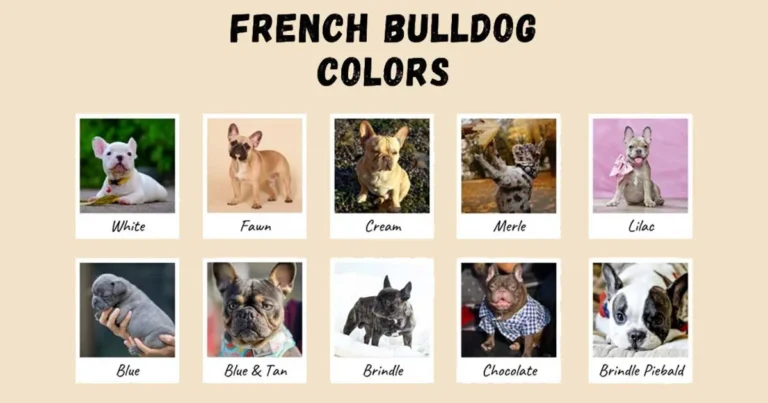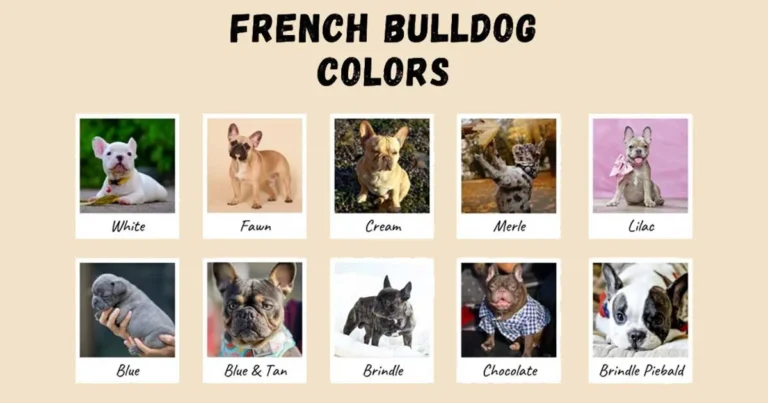White French Bulldog: Traits, Grooming & Buyer Guide
White French Bulldogs are adored for their snowy coats and sweet expressions, making them a standout choice for anyone drawn to elegance and personality. While they possess all the lovable traits of the standard Frenchie, their white coloring gives them an added level of visual appeal that fans find hard to resist.
This color variation is not without its complexities. White Frenchies require a bit more attention when it comes to grooming, potential pigmentation issues, and responsible breeding. With rising popularity, it’s crucial to know what you’re getting into before bringing one home.
In this guide, we’ll uncover every important aspect of the white French Bulldog—from how their coats are formed genetically, to grooming, temperament, health risks, and what makes them different from similar-colored Frenchies.
- Learn the science behind their stunning coat color
- Differences between white, albino, cream, and pied Frenchies
- Key grooming routines and skin sensitivities to know
- Buyer tips for avoiding unethical breeders
- Why their temperament fits families, singles, and apartment living
Let’s dive into the world of white French Bulldogs and discover why they’re so rare, beautiful, and worth the commitment.
What Makes White French Bulldogs Unique?
White French Bulldogs attract instant attention with their clean, snow-like coats and trademark Frenchie features. Their elegance and rarity make them favorites among dog lovers and social media fans alike.
Unlike albino French Bulldogs, which lack all pigment, true white Frenchies retain some pigmentation—often seen as light patches on the ears or eyes. Their coats are uniform but still show subtle character.
Despite the unusual color, white Frenchies are full-blooded French Bulldogs and meet the same breed standards. Their charming personality, sturdy build, and friendly demeanor remain consistent.
- Pure white coats without being albino
- May feature light spotting or markings
- Fully conform to breed standards in behavior and size
- Known for photogenic and social media-friendly looks
- High demand has led to increased breeding interest
Their appeal lies in the perfect combination of rarity, beauty, and that classic Frenchie character.
Genetics Behind the White Coat
The white color in French Bulldogs is typically a result of recessive genes like “e” or spotting genes such as “S” (piebald). These affect how melanin is expressed, reducing pigment in the coat.
While some white Frenchies are produced responsibly through tested pairings, careless breeding for color alone can result in serious issues like congenital deafness or poor vision. Pigment-related genes must be managed with care.
Reputable breeders invest in DNA tests and ethical pairings to ensure that the white coat does not come at the cost of the dog’s health. Always look for this transparency before adopting or buying.
- Recessive “e” gene prevents standard pigment expression
- Piebald spotting can cause white patches or full-white coats
- Poor breeding increases risk of deafness or vision issues
- Ethical breeders always DNA test for genetic health
- Coat color should never be prioritized over wellness
Understanding the science behind their coloring empowers you to choose your puppy wisely and protect the breed’s health.
Are White French Bulldogs Rare?
Compared to fawn, brindle, or pied French Bulldogs, white ones are significantly less common. Their rarity adds to the demand and often raises their price point in the breeder market.
Celebrity exposure and social media influence have made white Frenchies more visible and desirable. This unfortunately attracts unethical breeding practices focused only on profit.
White French Bulldogs are not albinos or cream-colored variants, but confusion between them is common. Knowing the difference is key when buying or adopting.
- Rare compared to mainstream colors like fawn and brindle
- Higher price tags due to visual appeal and demand
- Often showcased by celebrities and influencers
- Mistaken frequently for cream or light fawn Frenchies
- Ethical sourcing matters more than rarity alone
Their rarity adds allure, but health, ethics, and knowledge should always guide your decision.
Physical Features That Set Them Apart
White French Bulldogs have all the signature features that define the breed—bat ears, short snouts, stocky frames—but their coat color gives them an added sparkle.
Their lack of pigment may cause pinkish noses, pale eye rims, and lighter paw pads. These features can be adorable but sometimes point to increased sensitivity.
You may also notice tear stains, especially around the eyes, which appear more prominently on white fur. This is manageable with regular care and the right grooming products.
- Signature compact, muscular frame of Frenchies
- Lighter pigmentation may result in blue or hazel eyes
- Pink noses and light paw pads are common
- White fur shows stains and dirt more quickly
- Tear stains may require special attention
They look like living plush toys—but their coat color means staying extra attentive to skin and fur maintenance.
Temperament and Behavior
White French Bulldogs have the same delightful temperament as any other Frenchie. They’re affectionate, clever, and always eager to be at the center of attention.
Whether you’re single, a couple, or have children, white Frenchies make for great companions. Their friendly nature extends to other pets, and they’re ideal for smaller homes or apartments.
While smart, they can be a bit stubborn. Positive reinforcement training works best, especially when treats are involved. They love to learn, but only on their terms.
- Loyal and affectionate toward their family
- Adaptable to homes with children or other animals
- Thrive in apartments or compact spaces
- Playful yet calm—perfect lap dogs
- Respond well to praise and reward-based training
Their cheerful personalities make them unforgettable members of the family, regardless of coat color.
Health Concerns to Watch Out For
Due to pigmentation-linked genetics, some white French Bulldogs are more prone to certain health issues, especially when bred without proper planning.
Common problems include congenital deafness, sun sensitivity, and skin irritations. Their flat faces can also lead to breathing issues typical of brachycephalic breeds.
Routine vet care, sun protection, and choosing reputable breeders are key to managing these concerns. Most white Frenchies live happy, healthy lives when cared for properly.
- Risk of deafness from recessive genes
- Sensitive skin prone to irritation and allergies
- Breathing issues due to flat-faced anatomy
- Light eyes may be more vulnerable to UV damage
- Preventive care and ethical breeding are crucial
Being informed allows you to protect your dog’s health from day one and ensure their well-being.
Grooming and Coat Maintenance Tips
A white Frenchie’s coat requires more frequent attention since dirt and stains are more noticeable. Gentle, consistent grooming is the key to keeping them clean and healthy.
Use tear stain removers and hypoallergenic wipes for their face and eyes. The folds around their snout also need to be wiped regularly to prevent bacterial buildup.
Bathing should be done every 2–4 weeks using shampoos formulated for white coats. This prevents staining, keeps the fur shiny, and maintains skin health.
- Coat shows food, dirt, and tear stains quickly
- Clean wrinkles and folds daily with soft wipes
- Use gentle tear stain removers to prevent discoloration
- Choose hypoallergenic, whitening shampoos
- Maintain regular grooming schedule for coat health
With a bit of consistency, your Frenchie’s snow-white coat will stay bright, soft, and fresh all year round.
White vs. Albino, Cream, or Pied French Bulldogs
White French Bulldogs are often confused with albino, cream, or pied variations. Each has distinct features and genetic profiles.
Albino Frenchies have no pigment and are extremely rare. They typically have pink eyes and more severe health risks. Cream Frenchies have a pale yellow hue and are genetically different.
Pied Frenchies are primarily white with large patches of dark color. Understanding these differences helps buyers make informed, accurate decisions.
- Albino: lacks all pigment; pink eyes and nose
- Cream: ivory to yellowish coats with full pigmentation
- Pied: white body with large, darker-colored spots
- White: pure white coat with light pigment and some markings
- Mislabeling is common; always verify with breeder
Knowing the difference helps you avoid confusion—and potentially unethical pricing or health issues.
Buying Tips and Ethical Breeder Checklist
Finding a healthy, responsibly bred white French Bulldog starts with identifying ethical breeders. Look for transparency, health testing, and clean, loving environments.
Avoid breeders who market “rare white” puppies without proof of genetic testing. Ask to see the parents, and request medical documentation for common breed health risks.
If you’re open to it, also consider adopting through breed-specific rescues or shelters. Though rare, white Frenchies do occasionally become available.
- Ethical breeders run DNA and health screenings
- Visit breeder in person or request full documentation
- Ask about parent dogs’ health and background
- Avoid sellers focused only on price or coat color
- Consider rescues and shelters as alternative options
Responsible buying ensures your white Frenchie starts life on the right paw—with love, health, and happiness.
FAQs
- Are white French Bulldogs more expensive than other colors?
Yes, due to rarity and visual appeal, they’re often priced higher—but ethical breeding should always come first. - Can white French Bulldogs go deaf?
Yes, congenital deafness is possible due to pigmentation genes, but ethical breeding reduces this risk. - Do white Frenchies need special grooming?
Yes, because their coats show dirt and staining more easily, especially around the eyes and folds. - Is a white French Bulldog the same as an albino?
No. Albinos lack all pigmentation, while white Frenchies retain some and are genetically different. - Are white French Bulldogs good for apartment living?
Absolutely. Their compact size, quiet nature, and low exercise needs make them ideal for smaller spaces.
Conclusion
White French Bulldogs offer a magical mix of elegance, playfulness, and irresistible charm. Their unique appearance draws admiration, but their loving personality is what truly wins hearts.
From understanding the science behind their coats to grooming tips and health awareness, owning a white Frenchie is a commitment that rewards you with loyalty and joy.
By choosing knowledge over trend and ethics over rarity, you’ll find a furry companion who’s more than just a pretty face—they’ll be family.



